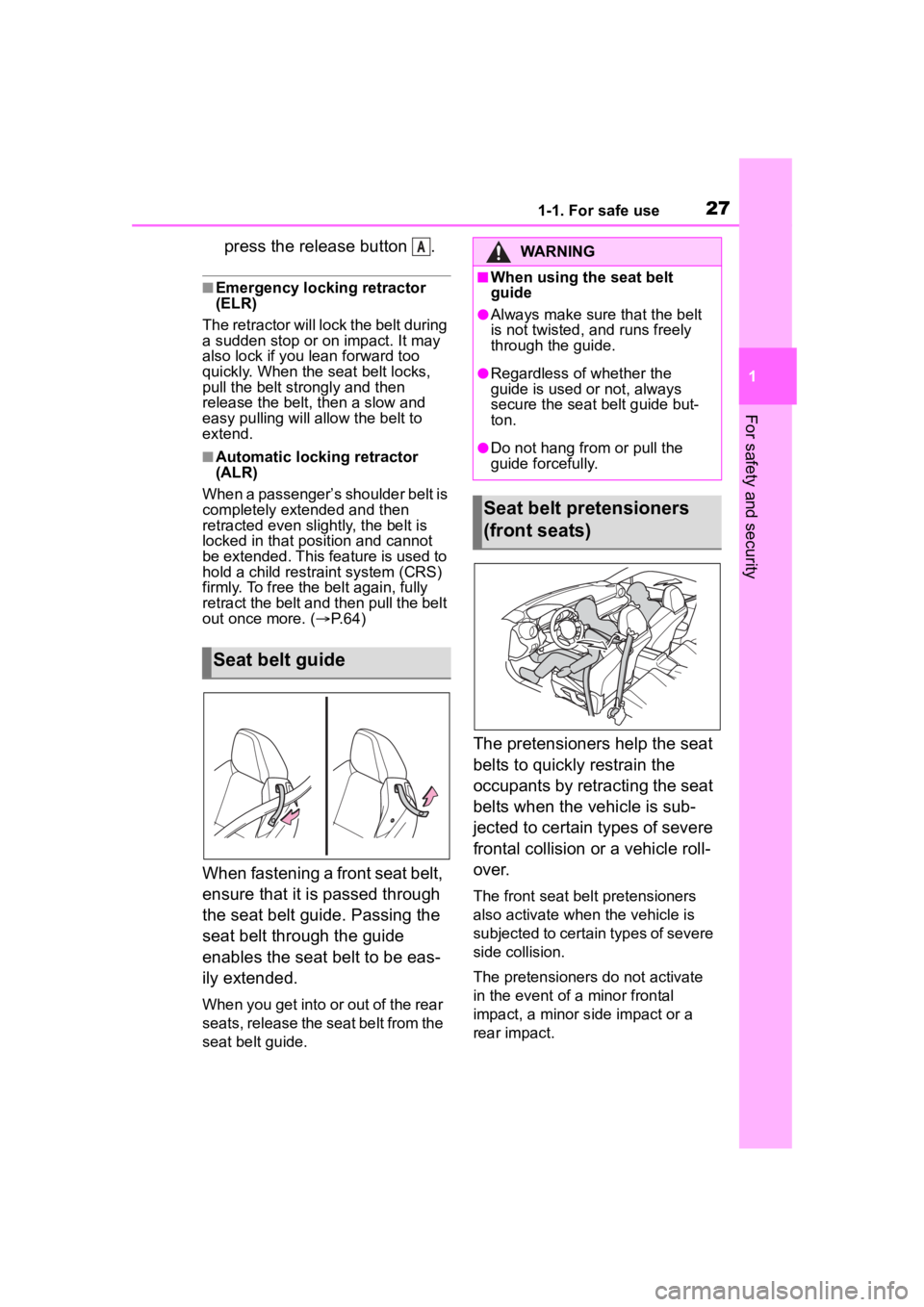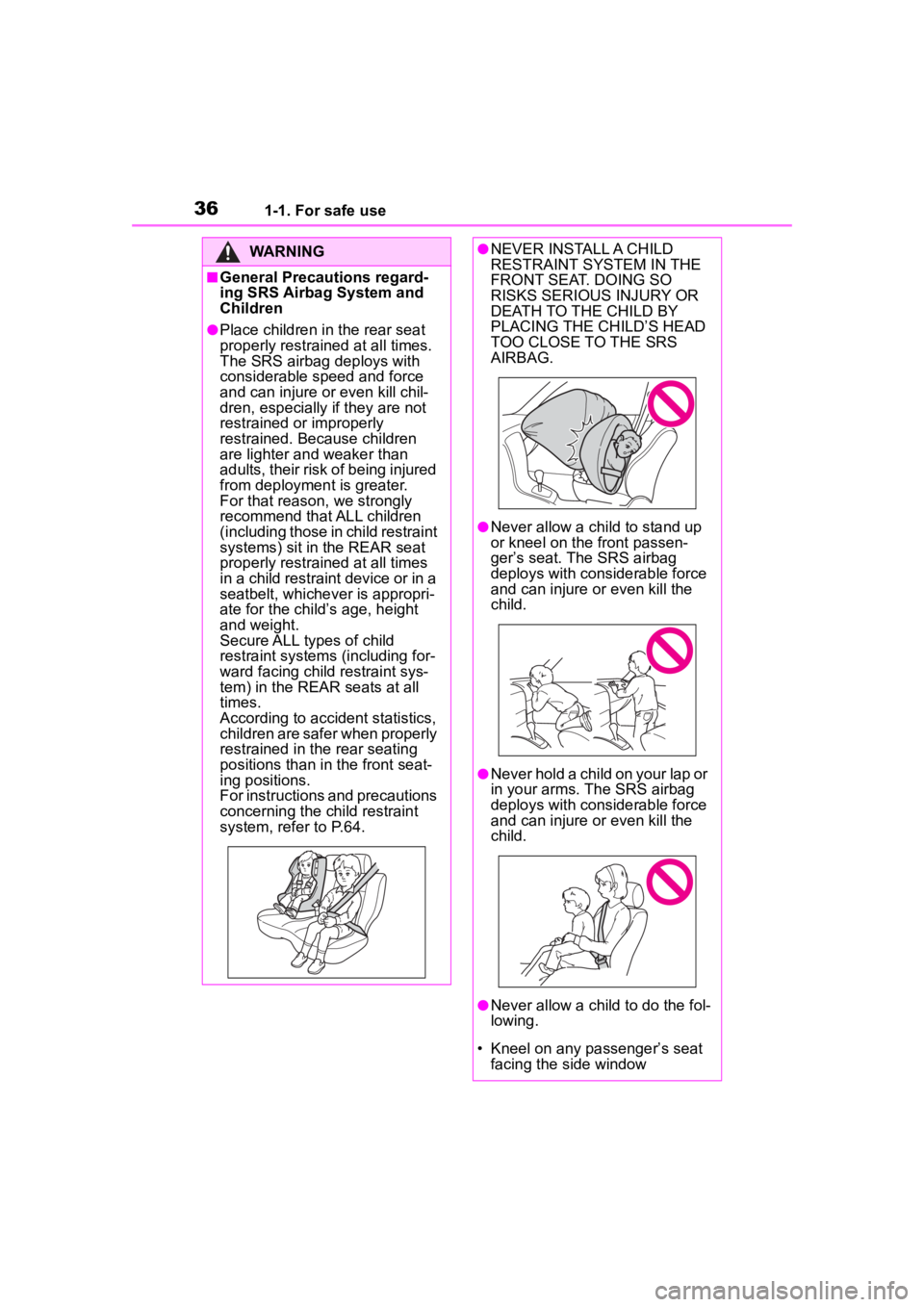Page 16 of 449
16Pictorial index
■Switches
Instrument panel light cont rol dial ..................................... P.91
Trunk opener switch ............................................ .............. P.109
Outside rear view mirror swi tches ................................... P.127
Door lock switches ............................................................ P.106
Power window switches ....... ............................................. P.129
Window lock switch ............................................. .............. P.130
Meter control switches .. ...................................................... P.94
Paddle shift switches
*1.............................................. P.151, 152
A
C
D
A
Page 19 of 449
19Pictorial index
■Ceiling
Inside rear view mirror ........................................ .............. P.126
Sun visors..................................................... ...................... P.284
Vanity mirrors ................................................. .................... P.284
Vanity mirror lights
*........................................................... P.28 4
Interior lights ................................................ ...................... P.277
“SOS” button
*/“i” button*.................................................... P.75
*: If equipped
A
C
D
Page 23 of 449

231-1. For safe use
1
For safety and security
Adjust the angle of the seat-
back so that you are sitting
straight up and so that you do
not have to lean forward to
steer. (P.119)
Adjust the seat so that you
can depress the pedals fully
and so that your arms bend
slightly at the elbow when
gripping the steering wheel.
( P.119)
Lock the head restraint in
place with the center of the
head restraint closest to the
top of your ears. ( P.123)
Wear the seat belt correctly.
( P.25)
WARNING
■Before driving
●Check that the floor mat is
securely fixed in the correct
place with all the provided
retaining hooks (clips). Be espe-
cially careful to perform this
check after cleaning the floor.
●With the engine stopped and
the shift lever in P (Automatic
transmission) or N (manual
transmission), fully depress
each pedal to the floor to make
sure it does not interfere with
the floor mat.
For safe driving
For safe driving, adjust the
seat and mirror to an appro-
priate position before driv-
ing.
Correct driving posture
A
C
D
Page 27 of 449

271-1. For safe use
1
For safety and security
press the release button .
■Emergency locking retractor
(ELR)
The retractor will lock the belt during
a sudden stop or on impact. It may
also lock if you lean forward too
quickly. When the seat belt locks,
pull the belt str ongly and then
release the belt, then a slow and
easy pulling will allow the belt to
extend.
■Automatic locking retractor
(ALR)
When a passenger’s shoulder belt is
completely extended and then
retracted even slightly, the belt is
locked in that position and cannot
be extended. This feature is used to
hold a child restraint system (CRS)
firmly. To free the belt again, fully
retract the belt and then pull the belt
out once more. ( P. 6 4 )
When fastening a front seat belt,
ensure that it is passed through
the seat belt guide. Passing the
seat belt through the guide
enables the seat belt to be eas-
ily extended.
When you get into or out of the rear
seats, release the seat belt from the
seat belt guide.
The pretensioners help the seat
belts to quickly restrain the
occupants by retracting the seat
belts when the vehicle is sub-
jected to certain types of severe
frontal collision or a vehicle roll-
over.
The front seat belt pretensioners
also activate when the vehicle is
subjected to certain types of severe
side collision.
The pretensioners do not activate
in the event of a minor frontal
impact, a minor s ide impact or a
rear impact.
Seat belt guide
AWARNING
■When using the seat belt
guide
●Always make sure that the belt
is not twisted, and runs freely
through the guide.
●Regardless of whether the
guide is used or not, always
secure the seat belt guide but-
ton.
●Do not hang fr om or pull the
guide forcefully.
Seat belt pretensioners
(front seats)
Page 28 of 449
281-1. For safe use
■Replacing the belt after the pre-
tensioner has been activated
If the vehicle is in volved in multiple
collisions, the pretensioner will acti-
vate for the first collision, but will not
activate for the second or subse-
quent collisions.
WARNING
■Seat belt pretensioners
●Do not place anything, such as
a cushion, on the front passen-
ger’s seat. Doing so will
disperse the passenger’s
weight, which prevents the sen-
sor from detecting the passen-
ger’s weight properly. As a
result, the seat belt pretensioner
for the front passenger’s seat
may not activate in the event of
a collision.
●If the pretensioner has acti-
vated, the SRS warning light will
come on. In that case, the seat
belt cannot be used again and
must be replaced at your Toyota
dealer.
Page 31 of 449
311-1. For safe use
1
For safety and security
■SRS airbag system componentsFront impact sensor (left-hand side)
Front impact sensor (right-hand side)
SRS warning light
Frontal airbag module (driver’s side)
Airbag control module (including impact sensor and rollover sen-
sor)
Front passenger’s frontal airbag ON and OFF indicator
Frontal airbag module (front passenger’s side)
Seatbelt buckle switch (front passenger’s side)
Curtain shield airbag module (right-hand side)
Side impact sensor (door right-hand side)
Side airbag module (fr ont passenger’s side)
Seatbelt pretensioner and adaptive force limiter (front passen-
ger’s side)
Side impact sensor (center pillar right-hand side)
Airbag wiring
Side impact sensor (rear wheel house right-hand side)
Front passenger’s occupant detection system sensor
A
C
D
Page 36 of 449

361-1. For safe use
WARNING
■General Precautions regard-
ing SRS Airbag System and
Children
●Place children in the rear seat
properly restrained at all times.
The SRS airbag deploys with
considerable speed and force
and can injure or even kill chil-
dren, especially if they are not
restrained or improperly
restrained. Because children
are lighter and weaker than
adults, their risk of being injured
from deployment is greater.
For that reason, we strongly
recommend that ALL children
(including those in child restraint
systems) sit in the REAR seat
properly restrained at all times
in a child restraint device or in a
seatbelt, whichever is appropri-
ate for the child’s age, height
and weight.
Secure ALL types of child
restraint systems (including for-
ward facing child restraint sys-
tem) in the REAR seats at all
times.
According to accident statistics,
children are safer when properly
restrained in the rear seating
positions than in the front seat-
ing positions.
For instructions and precautions
concerning the child restraint
system, refer to P.64.
●NEVER INSTALL A CHILD
RESTRAINT SYSTEM IN THE
FRONT SEAT. DOING SO
RISKS SERIOUS INJURY OR
DEATH TO THE CHILD BY
PLACING THE CHILD’S HEAD
TOO CLOSE TO THE SRS
AIRBAG.
●Never allow a child to stand up
or kneel on the front passen-
ger’s seat. The SRS airbag
deploys with considerable force
and can injure o r even kill the
child.
●Never hold a child on your lap or
in your arms. The SRS airbag
deploys with considerable force
and can injure o r even kill the
child.
●Never allow a child to do the fol-
lowing.
• Kneel on any passenger’s seat facing the side window
Page 46 of 449

461-1. For safe use
■If the passenger’s frontal airbag
OFF indicator illuminates and
the ON indicator turns off even
when the front passenger’s seat
is occupied by an adult
This can be caused by the adult
incorrectly sitting in the front pas-
senger’s seat.
1 Turn the engine switch off.
2 Ask the front passenger to set
the seatback to the upright posi-
tion, sit up straight in the center
of the seat cushion, correctly fas-
ten the seatbelt, position his/her
legs out forward, and adjust the
seat to the rearmost position.
3 Turn the engine switch to ON.
If the OFF indicator remains illumi-
nated while the ON indicator
remains off, take the following
actions.
1 Turn the engine switch off.
2 Make sure that the front passen-
ger does not use a blanket, extra
seat cushion, sea t cover, extra
seat heater or massager, etc.
3 If wearing excessive layers of
clothing, the front passenger
should remove any unnecessary
items before sitting in the front
passenger’s seat, or should sit in
a rear seat.
4 Turn the engine switch to ON
and wait 6 seconds to allow the
system to complete self-check-
ing. Following the system check,
both indicators turn off for 2 sec-
onds. Now, the ON indicator
should illuminate while the OFF
indicator remains off.
If the OFF indicator still remains illu-
minated while the ON indicator
remains off, ask the occupant to
move to the rear seat and immedi-
ately contact your Toyota dealer for
an inspection.■If the seatbelt buckle switch
and/or front passenger’s occu-
pant detection system have
failed
If the seatbelt buckle switch and/or
front passenger’s occupant detec-
tion system have failed, the SRS
warning light will illuminate. Have
the system inspected by your Toyota
dealer immediately if the SRS warn-
ing light illuminates.
■When to contact your Toyota
dealer
If your vehicle has sustained impact,
this may affect the proper function of
the Toyota advanced frontal airbag
system. Have your vehicle
inspected at your Toyota dealer. Do
not use the front passenger’s seat
while driving the vehicle to your Toy-
ota dealer.
WARNING
■When using a child restraint
system
NEVER INSTALL A CHILD
RESTRAINT SYSTEM IN THE
FRONT PASSENGER’S SEAT
EVEN IF THE FRONT PASSEN-
GER’S SRS FRONTAL AIRBAG
IS DEACTIVATED. Be sure to
install it in the REAR seat in a cor-
rect manner. Also, it is strongly
recommended that any forward
facing child seat or booster seat
be installed in the REAR seat, and
that even children who have out-
grown a child restraint system be
also seated in the REAR seat.
This is because children sitting in
the front passenger’s seat may be
killed or severely injured should
the front passenger’s SRS frontal
airbag deploy. REAR seats are
the safest place for children.